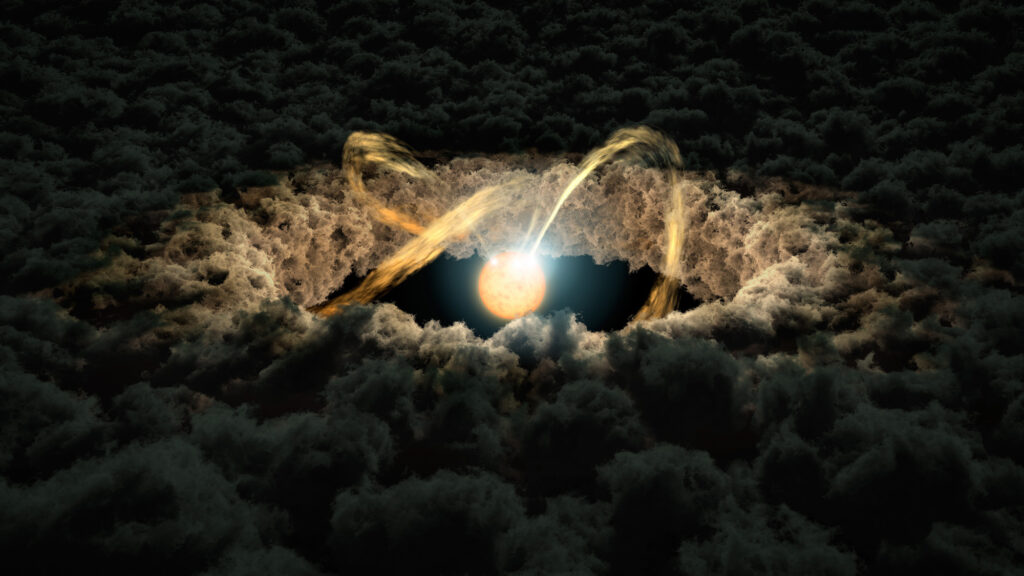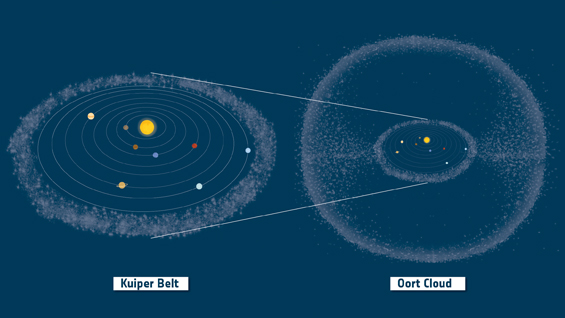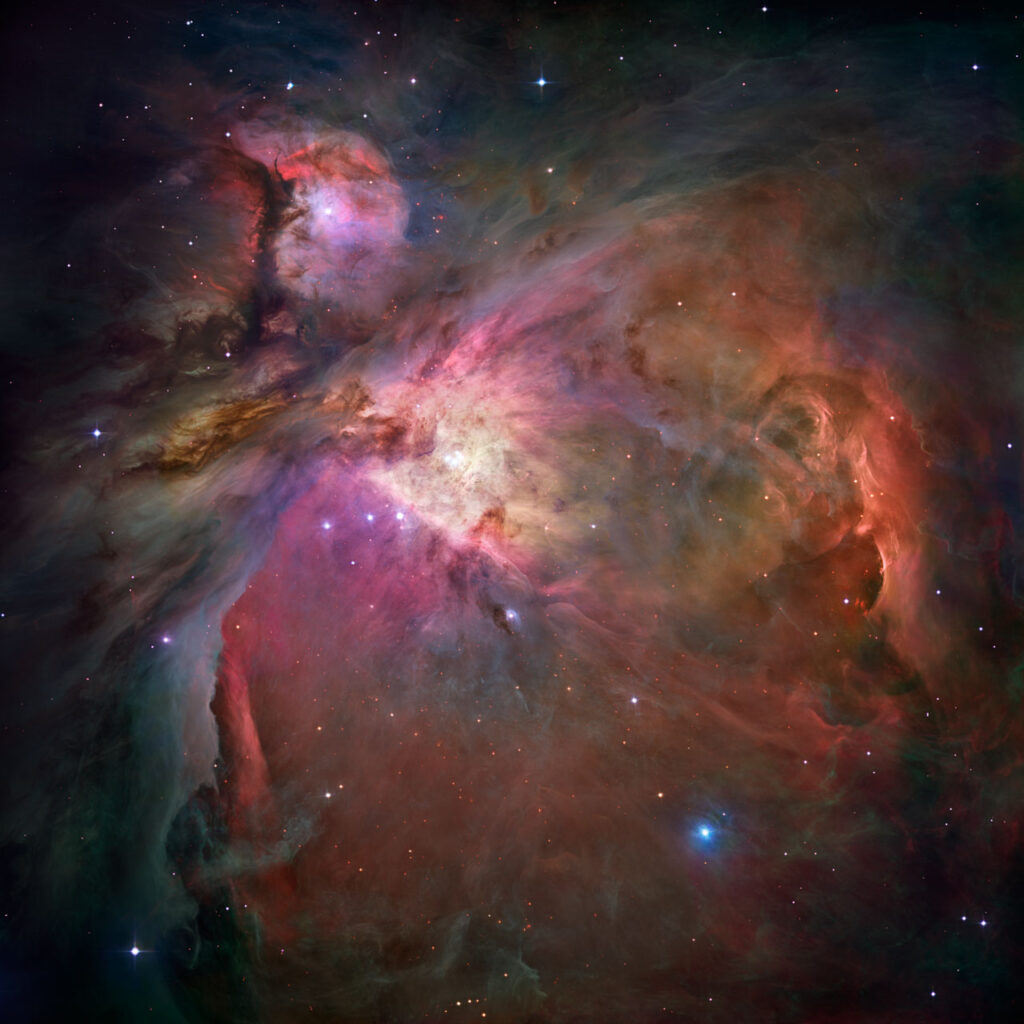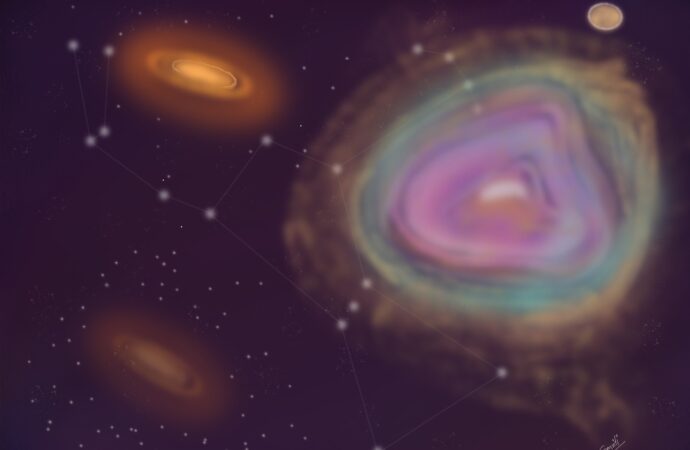In 1992, Aleksander Wolszczan and Dale Frail rocked the astronomy community discovering the first two planets around a star other than our Sun. Until then, our solar system was the only planetary system we knew. That breakthrough planted the seed for the discovery of thousands of exoplanets. Over 4300 exoplanets, only in our galaxy, have been confirmed.
In the last decade, astrophysicists have enjoyed direct observations of the cradles of stars and their planets. When a star begins to form, an enormous rotating disk of gas and dust surrounds it. The material from this cloud or the protoplanetary disk has the potential to produce planets.
However, a star’s birth environment can be very hostile, which may prevent its protoplanetary disk from maturing into a system with planets.

That opens the question: which type of environment allows a planetary system to develop? This is the question we are answering in my Ph.D. thesis at Leiden University. Here I explain what we found.
Many stars are born in clusters, with several stars emerging from the same core of gas pretty much simultaneously. The leftover star formation is a protoplanetary disk: a rotating mass of gas and dust that contains the essential elements for planet formation.
This process usually occurs in a neighborhood plagued with other stars and gas, an environment that can make the protoplanetary disks lose their mass in different ways, limiting their potential to form planets.
Planet cradles steal material from each other
When a star passes close to a protoplanetary disk, it can interact with the outer disk material and remove it due to gravity. Also, it may happen that two disks encounter each other and even exchange material. Scientists have evidence that the early disk of the solar system might have gone through such an encounter. In particular, the sharp drop in the number of asteroids beyond Neptune’s orbit suggests that a passing star might have perturbed the early disk, removing some material from the external parts.
Our Sun could also have stolen material from a passing disk. Astronomers proposed this hypothesis by studying a family of rocks called Sednitos orbiting between the Edgeworth–Kuiper belt and the Oort Cloud. These objects have orbits that are very eccentric and different from those of the solar system planets and other asteroids. This suggests that they might not have formed within the early solar system disk, but they were captured from another star’s disk.
Stars may evaporate their own baby planets
Besides other disks stealing their material, a protoplanetary disk can lose mass by evaporation. Radiation coming from stars — both neighboring stars in the cluster and their own host star Z — can heat the dust and gas of the disk so much that it evaporates, just as a pot of water evaporates when put on the stove. This evaporation process starts almost as soon as the star and disk form. The dust and gas inside the disks have very little time to agglomerate into larger pebbles and planet cores.
The more radiation a disk receives, the more mass it will lose and the faster this loss will happen. If a disk loses a lot of material very quickly, it might never form planets at all. The amount of radiation that a disk receives depends greatly on how many stars are around it; and how close these stars are to the disk and to each other. In this way, the star cluster environment is crucial in determining if planets will form or not.
Modeling the birthing room of the stars
In our recent study, published in Monthly Notices of the Royal Astronomical Society, we simulated early stages of star formation along with their protoplanetary disks.
We used areas of different stellar densities: some regions were very populated with stars, and these were very close to each other. Other regions were more sparse, with larger distances between the stars.
Our goal was to understand how the density of stars in their “birthing room” affects their protoplanetary disk’s survival, focusing on the evaporation of the gas by the radiation from the star in a cluster.

We modeled clusters of baby stars with their disk in “birthing rooms” of sizes from 0.1 to 5 parsec across. To grasp how far one parsec is, consider that the distance from our Sun to Pluto is ten-thousandths of a parsec. The solar system is 0.6 parsecs in diameter up to the Oort cloud. The closest star to the Sun, Proxima Centauri, is almost 1 parsec away.
This method helped us to find environments where planetary systems like our solar system could form.
We modeled these regions with the same number of stars. But, by being of such a range of sizes, they resulted in a big array of different stellar densities. In the regions where the stars were more densely packed, the background radiation field was stronger. We simulated the star clusters’ evolution for 2 million years and looked at the surviving amount of disks.
Distancing is the key to survival
Our results show that the number of surviving disks is highly dependent on the density of the stellar region. As expected, many more disks survive when there are larger distances between the stars because the radiation they receive is less intense.
In particular, we find that a density of 100 stars per square parsec is a good threshold for determining if an environment is safe for planets to form. In regions denser than this, the mass of the disks drops very rapidly.
The solar neighborhood today has an estimated density of 15 stars per 10 square parsec. Note that we use squared units of the area rather than cubic units of volume. This is because, in astronomical observations, we only have a two-dimensional image of the stars’ positions, so we can only calculate area densities.
Besides being able to derive this density threshold, we compared the final disk masses in our simulations to observed disk masses in real star-forming regions. We did this to make sure that our models reflected the real physics going on in these regions. Our calculations beautifully matched observations of the Lupus clouds, the Orion Nebula Cluster, the Orion Molecular Cloud-2, the Taurus molecular cloud, and the Flame Nebula.
If you ever wonder about the chances of the existence of our solar system as majestic as it is today, think that many planetary systems are prematurely destroyed and that many planets never get to see the light from their host stars.

References
- Francisca Concha-Ramírez, Martijn J. C. Wilhelm, Simon Portegies Zwart, Sierk E. van Terwisga, and Álvaro Hacar, A. (2021). Effects of stellar density on the photoevaporation of circumstellar disks. Monthly Notices of the Royal Astronomy Society 501, 1782–1790. doi:10.1093/mnras/staa3669.
- Francisca Concha-Ramírez Martijn J. C. Wilhelm, Simon Portegies Zwart, and Thomas J. Haworth. (2019). External photoevaporation of circumstellar disks constrains the time-scale for planet formation. Monthly Notices of the Royal Astronomy Society 490, 5678–5690 (2019) doi:10.1093/mnras/stz2973.
- Lucie Jílková , Simon Portegies Zwart, Tjibaria Pijloo, and Michael Hammer. (2015). How Sedna and family were captured in a close encounter with a solar sibling. Monthly Notices of the Royal Astronomy Society 453, 3157–3162. doi:10.1093/mnras/stv1803
Illustration by Smriti Srivastava.
Find more on parsecs and how astronomers calculate distances between stars in this video by Las Cumbres Observatory.





